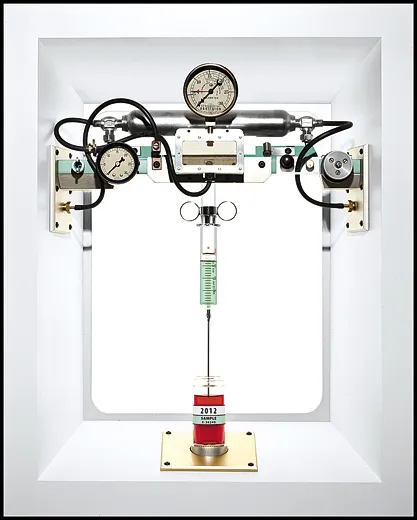The Future of Cheating in Sports
As technology advances, so will access to ingenious—and troubling—new techniques
/https://tf-cmsv2-smithsonianmag-media.s3.amazonaws.com/filer/Doping-cheating-631.jpg)
One clue to where doping is headed is the case of Thomas Springstein, a German track coach notorious for trying to get his hands on an experimental gene therapy for anemia. “Repoxygen is hard to get,” he wrote to a Dutch doctor in an e-mail revealed at a criminal trial in 2006. “Please give me new instructions soon so that I can order the product before Christmas.”
Repoxygen never made it out of the lab, and Springstein doesn’t seem to have obtained any. Instead, he eventually received a 16-month suspended jail sentence for supplying doping products to a minor, and the athletes he supplied drugs to were banned from competition. But his effort to obtain Repoxygen made headlines during his trial, forever linking him with a new phrase in the cheater’s lexicon—gene doping.
The approach potentially does an end run around conventional tests for drugs or foreign products in the bloodstream; it alters an athlete’s own DNA to produce performance-enhancing substances. If effective, the experimental treatment would endow a patient—or athlete—with a gene that cranks out extra erythropoietin (EPO), a hormone that spurs the production of red blood cells. And athletes already have been known to abuse synthetic EPO to increase stamina. Sports officials say there’s no evidence that any athlete has undergone gene doping, but they also suggest it’s only a matter of time.
The high-tech arms race between cheaters and testers has pushed both sides to the cutting edge of science. When drugs under development for medical conditions turn out to enhance performance, rogue athletes and coaches are fast on the scene. For instance, myostatin inhibitors, which provoke muscle growth in lab animals, aren’t available for clinical use, but they are already for sale on the black market.
Embedded technologies, such as artificial muscles or hidden motors, could someday give athletes another way to cheat, assuming they could mask them in their bodies or equipment. Electroactive polymers (EAPs) bend and stretch like real muscle fiber in response to an electrical charge; clothing woven with EAPs might augment an athlete’s muscle power, says Yoseph Bar-Cohen, a physicist at NASA’s Jet Propulsion Lab.
It seems drawing the line between acceptable and unsporting training methods is only going to get harder. At least three companies offer DNA-based tests that claim to identify a person’s innate athletic abilities. The tests, which are legal, don’t reveal much more than standard performance tests do, but as researchers identify additional genes, the tests could become a potent tool in recruiting and scouting. Is such screening unethical, or is it just a molecular version of clocking a young sprinter in the 50-yard dash?
Some observers predict the pressure to perform at any cost may increasingly affect kids. In 2006, the U.S. Anti-Doping Agency suspended a teenage in-line skater for doping; the boy’s father had been injecting him with growth hormone and steroids since he was 12. “It was one of the most sophisticated doping programs we’ve ever seen,” says USADA’s Travis Tygart.
Taken to an extreme, the search for talent might someday lead to efforts to breed superathletes, with embryos generated through in vitro fertilization subjected to genetic tests for athletic traits. The “best” embryos would then be brought to term. If such technologies mean that tomorrow’s competitors will be born and not made, we’ll need to radically redefine what it means to be an athlete.
